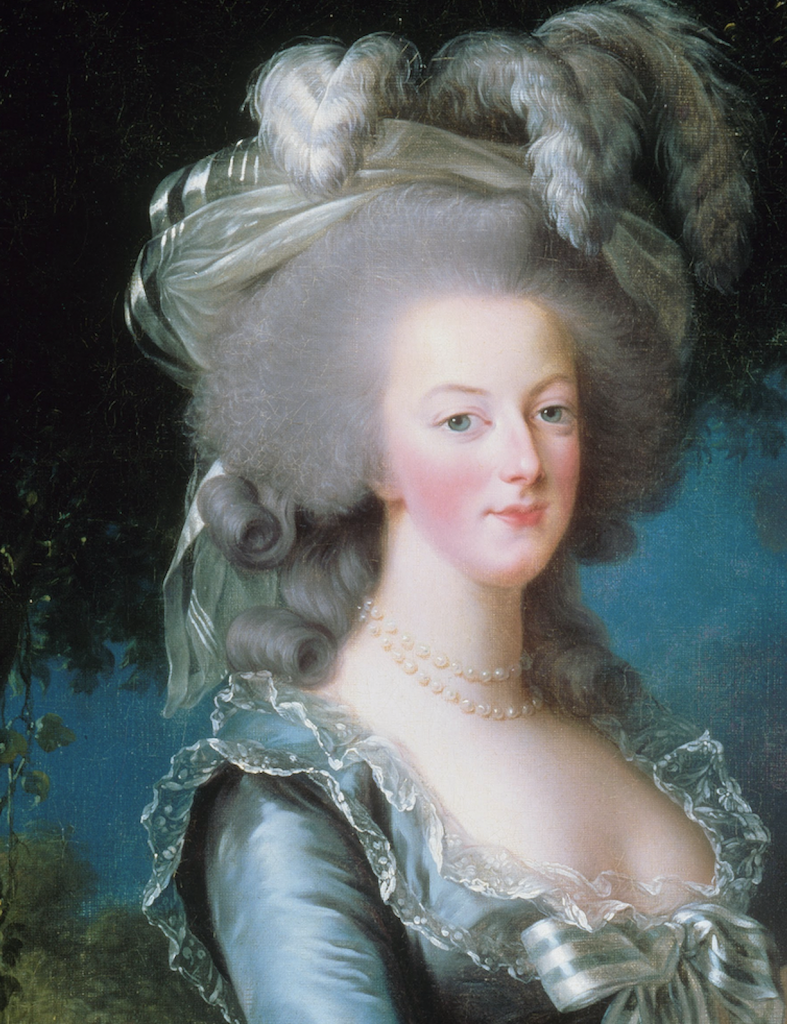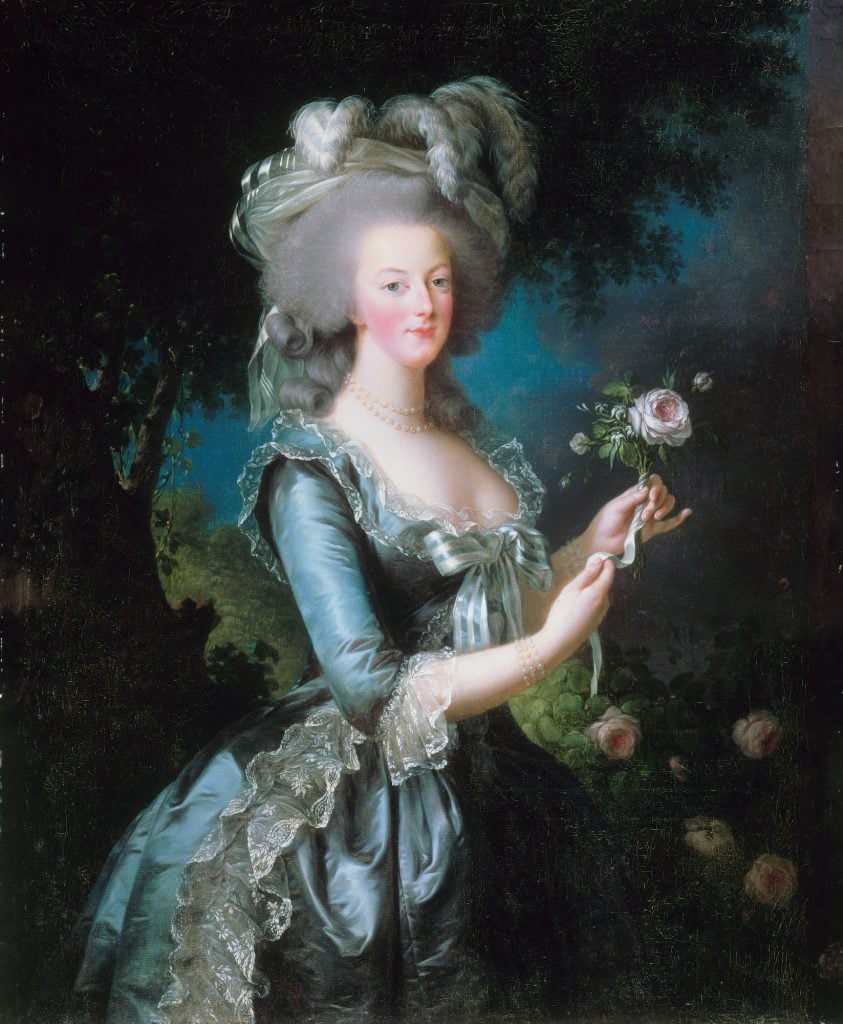The gown which evoked some disapproval for Marie-Antoinette was not one of the low-cut court gowns (shown above) but the simple white linen dress which she favored for her leisure time at Petit Trianon. The portrait in which she is shown thus had to be withdrawn from the public gaze because people took offense at seeing their Queen painted in casual attire. Now to us, the white dress is perfectly modest, but to people of the eighteenth century, it looked as if she were in her chemise, without the stiff corset prescribed for ladies of the royal family. Furthermore, it was interpreted as being a pro-Austrian picture, since linen came from Flanders, one of the Habsburg territories, and the rose the Queen held was seen as a symbol of the House of Austria.
In order to quell the outrage, Madame Vigée-Lebrun had to quickly come up with another painting. In 1783 the artist completed the portrait above, called "Marie-Antoinette à la rose" showing the Queen appropriately garbed in a silk court gown and headdress, trimmed with lace, ribbons and plumes. She is wearing pearls, as befits a Queen, with hair powdered and face rouged, in accord with court etiquette. She looks as if she has just stepped into her garden on a summer evening, bathed in moonlight. The nocturnal quality of the portrait softens the formality of her attire, alluding to Marie-Antoinette's love of nature, and the fact that she was much more at ease in her gardens than she was in the Hall of Mirrors.
From ArtNet News:
One of the premier artists of her age, and one of very few women artists in the Academy, Vigée Le Brun was invited to show in the 1783 Paris Salon. For the exhibition, the Queen agreed to have her most recent portrait—Marie Antoinette en robe de gaulle (Marie Antoinette in a Chemise Dress)—displayed to the public. The painting depicted the Queen in pastoral attire, donning a muslin cotton dress with a blue sash, a straw hat, and free of jewels.
The dress had been designed by dressmaker Rose Bertin, a popular French designer and a favorite of Queen’s. Bertin, a woman born to modest means, had become a competitively sought-after marchande de modes and was dressmaker to a stylish cohort including Vigée Le Brun herself, as well as the infamous Madame du Barry, the longtime mistress of King Louis XV. Bertin’s styles were often unconventional, sending early shockwaves through more traditional circles.
Though idyllic from a contemporary perspective, Vigée Le Brun’s painting sparked a furor in French society for its perceived lack of dignity. To many, the muslin dress read as bold insult to the public; rather than presenting herself as a regal queen deserving of respect, she attired herself in what many deemed to be her underwear, roleplaying a country girl.
During this era, Marie Antoinette particularly enjoyed spending time at her beloved Petit Trianon, a small château the King had gifted her on the grounds of Versailles, far from the palace and a sanctuary from the court life she deplored. There, the Queen had a functioning dairy, chickens, and other animals, and enjoyed an idyllic, if amusement-park-like, version of country life, and where she dressed informally, in-keeping with Vigée Le Brun’s portrait. (Read more.)
I am not watching the new PBS series about Marie-Antoinette. It is too loaded with inaccuracies for me to enjoy it. But for those interested HERE is an article about where it was filmed.




















No comments:
Post a Comment